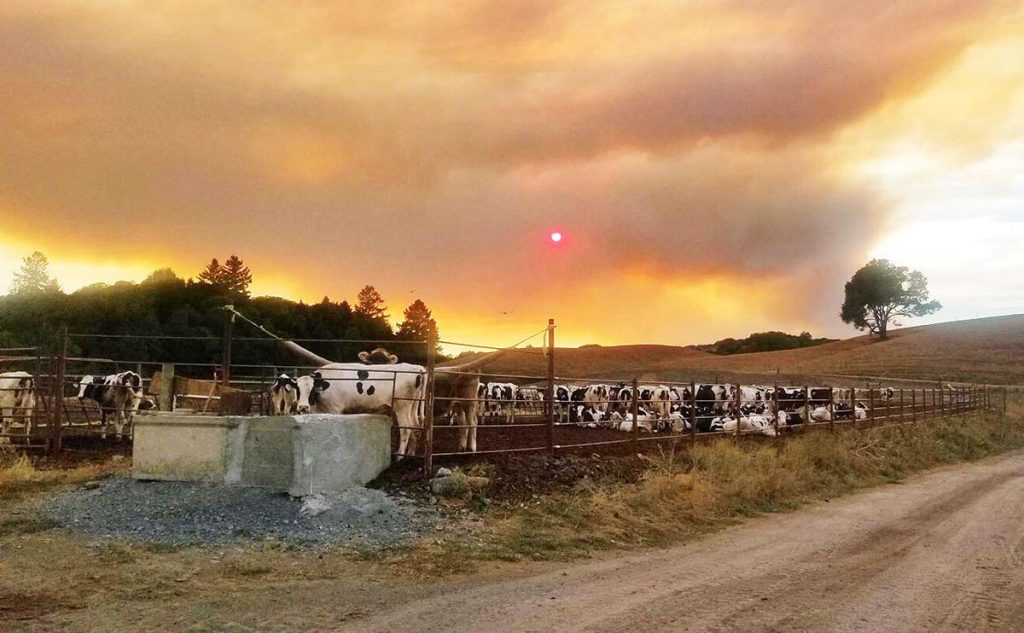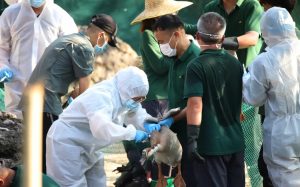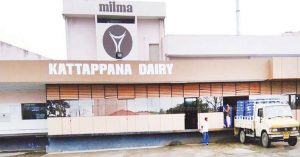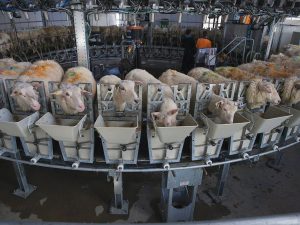Wildfires were burning more than 1.4 million acres in Northern and Central California as of Aug. 26, according to the National Interagency Fire Center. Fires are threatening livestock, burning homes and barns, damaging crops and scorching rangeland.
One series of blazes, the LNU Lightning Complex, is tearing through Sonoma, Lake, Napa, Solano and Yolo counties.
Agricultural commissioners and local fire agencies say they won’t have economic impact data for months, but agricultural leaders say fires are doing serious damage to farmers and ranchers.
A spokeswoman from the California Cattlemen’s Association told the Capital Press cattle ranchers in many parts of the state have been hit hard.
Alan Renz, a cattle rancher near Gilroy, Calif., said he had to evacuate 350 cows last weekend. Renz leases public and private land, and this summer he has already lost 100% of the forage on some of the parcels.
At one site, Renz said, his neighbor called him about a fire. Renz said he raced to the site and cut the fence to save his cattle 20 minutes before they would have been engulfed in flames.
“I’m so glad the neighbor called,” said Renz.
Renz said he considers himself fortunate compared to others.
“We have friends in other areas of the state who lost everything, houses included,” he said.
Tawny Tesconi, executive director of the Sonoma County Farm Bureau, said dairy farmers in evacuation zones struggle because they have to keep milking cows.
John Bucher, a dairy farmer near Healdsburg, Calif., is surrounded by fires and is sheltering in place. Bucher has 700 dairy cows and 1,400 total cattle. He said he and his staff have set up fire hydrants and hoses, created an emergency plan and will retreat to a dirt lot on the property if they need to shelter from fire.
Tesconi and the local sheriff are ensuring sure milk trucks can get to and from Bucher’s farm.
Bucher also grows 55 acres of Pinot noir grapes. He and others in the wine industry fear smoke and ash may impact wine flavor and are also concerned about agritourism impact.
The timber industry, experts say, is assessing forestland damage. Loggers have expressed concern that post-fire erosion may prevent them from moving equipment to harvest trees.
Industry leaders say croplands have also been damaged, but it’s too early to tell how much.
Dave Kranz, a spokesman for the California Farm Bureau Federation, told the Capital Press farmworkers are at risk of breathing smoky air. Agricultural commissioners and county Farm Bureaus are distributing masks, but experts say there may not be enough to go around.
The Farm Employers Labor Service said in a statement N95 respirators are still in short supply because of COVID-19.
“Masks are an immediate problem. People keep doing the best they can under these circumstances, but they need help,” said Kranz.
People who want to help farmers facing loss can donate to the California Farm Bureau Federation’s Farm and Rural Disaster Fund.















